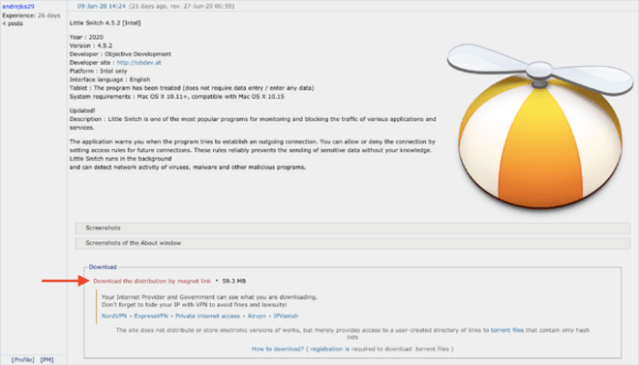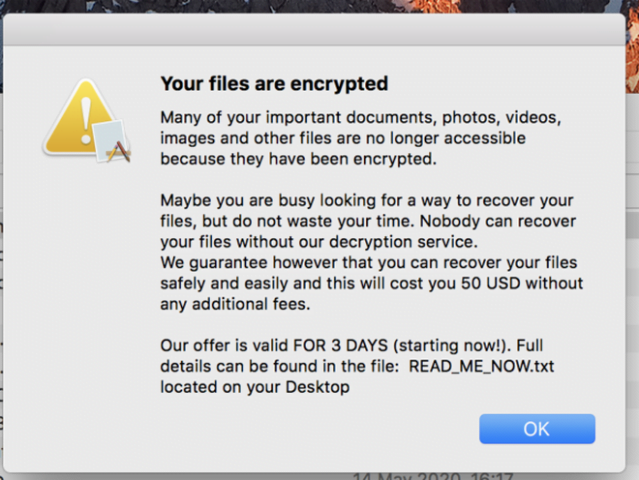this malicious code has the ability to hijack the victim’s computer, encrypt all important files, and send an extortion message if you want to recover data. Currently, this type of malicious code is being spread on torrents in Russia with the name OSX.ThiefQuest.

To tempt users into downloading to their computers, hackers will encapsulate the OSX.ThiefQuest malware in an impersonation software called Little Snitch – the software whose main function is to monitor and manage connections outside the internet. Widely used on devices using macOS in the world.
After deceiving the victim to download and install the software, this malicious code will create on the system files like a normal installer. More sophisticated, this installer also contains a script that is executed after the installation process is complete to make renaming and removing traces to trick users.
Once the infection is triggered by the installer, the malware starts spreading itself around the hard drive, leaving the victim’s computer encrypted with important data for the next 3 days. More carefully, this kind of malicious code
also install the executable files in locations that easily cause users to accidentally activate such as in system startup files or daemon plist files, this action is to create a backup plan. in case the previously launched attack program fails.
After the encryption process is complete, a blackmail file is created to show the user how to redeem encrypted data on the device.

Even the researchers pointed out that the malware has the ability to open a reverse shell for the command and control server to perform remote code execution actions to hijack the computer. the victim.
In addition, OSX.ThiefQuest malware has been equipped with anti-malware techniques. In the case of a user using a malware analyzer or debugger for the computer, this malware usually will not show its full capabilities.
Security experts VSEC recommends that, to avoid being infected by viruses from software downloaded on the computer, users need to identify the source and only download from reputable sites, always read the terms and provisions of applications / software before downloading; periodically check the computer with virus scanning software to promptly handle existing problems.
In addition, VSEC experts recommend that for every important data, you should have at least 2 backups, one of which is always in an external memory that is not directly connected to your computer. anytime. If you have good backups, ransomware is not a threat to you.
